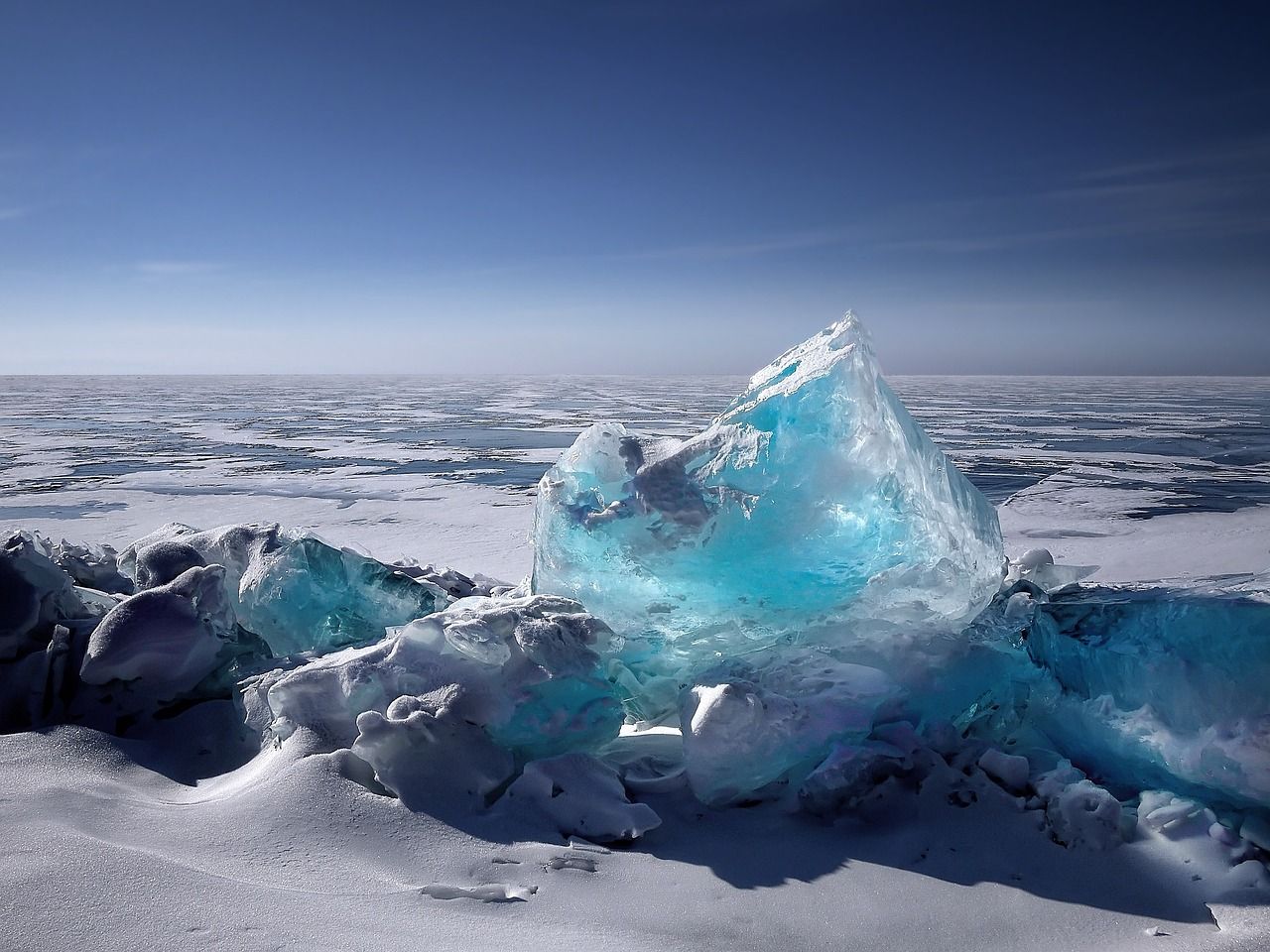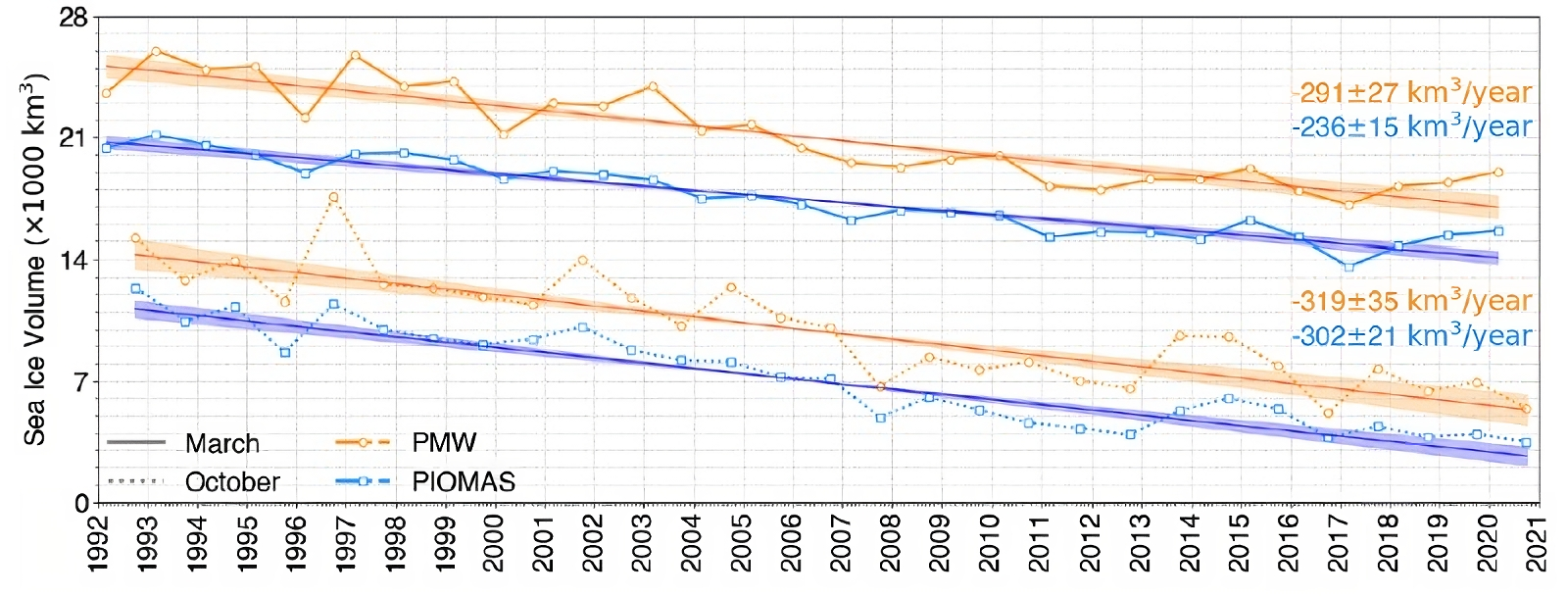30 years of decline in Arctic sea ice volume, seen by satellites 🧊
Follow us on Google News (click on ☆)

Illustration image Pixabay
The sea ice, formed by freezing seawater, covered most of the Arctic basin for the majority of the year, until the beginning of this century. However, since the late 1970s, Arctic sea ice has been gradually melting, especially in the summer, as revealed by satellite measurements of ice cover using passive microwaves.
These observations show a reduction of more than 10% per decade in summer sea ice extent, equivalent to more than five times the area of France since 1979. This melting, reproduced by climate models, is attributed to CO2 emissions from human activities.
However, measuring the ice cover does not provide information about the ice thickness, which would allow a better understanding of the melt, and, more importantly, the determination of the sea ice volume.
Estimates of sea ice thickness are obtained from space by altimeters (lidar and radar), but these observations are not continuously available over long periods; and until now, only numerical simulations from physical models have estimated the volume of Arctic sea ice, with an uncertainty of about 50%.

Reduction of sea ice volume in the Arctic between 1992 and 2020 for the months of October and March, estimated by passive microwave satellite observations (PMW) and a physical model (PIOMAS). The associated trends are indicated.
© CNRS Images
The study, involving in particular the Laboratory for the Study of Radiation and Matter in Astrophysics and Atmospheres – LERMA at the Paris Observatory – PSL, shows the potential of passive microwave observations from satellites to estimate the thickness and winter volume of Arctic sea ice. The method is based on an artificial intelligence algorithm, trained on lidar ice thickness data, and takes advantage of the long time series of microwave observations.
The ice thicknesses obtained and the sea ice volumes derived from them are consistent with simulations over the last 30 years: both sources agree better than expected on ice volumes and are close in terms of sea ice volume trends and its year-to-year changes.
Thus, passive microwave satellite data can significantly reduce uncertainties about Arctic sea ice volume and its evolution and should improve the accuracy of future sea ice forecasts.